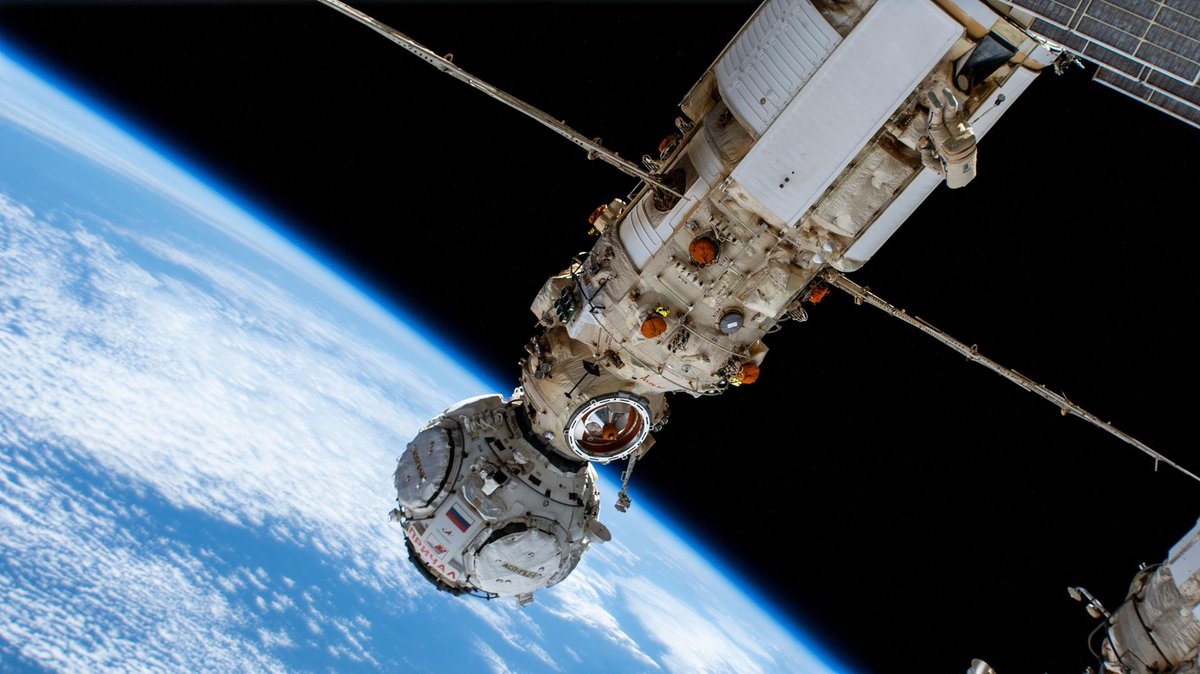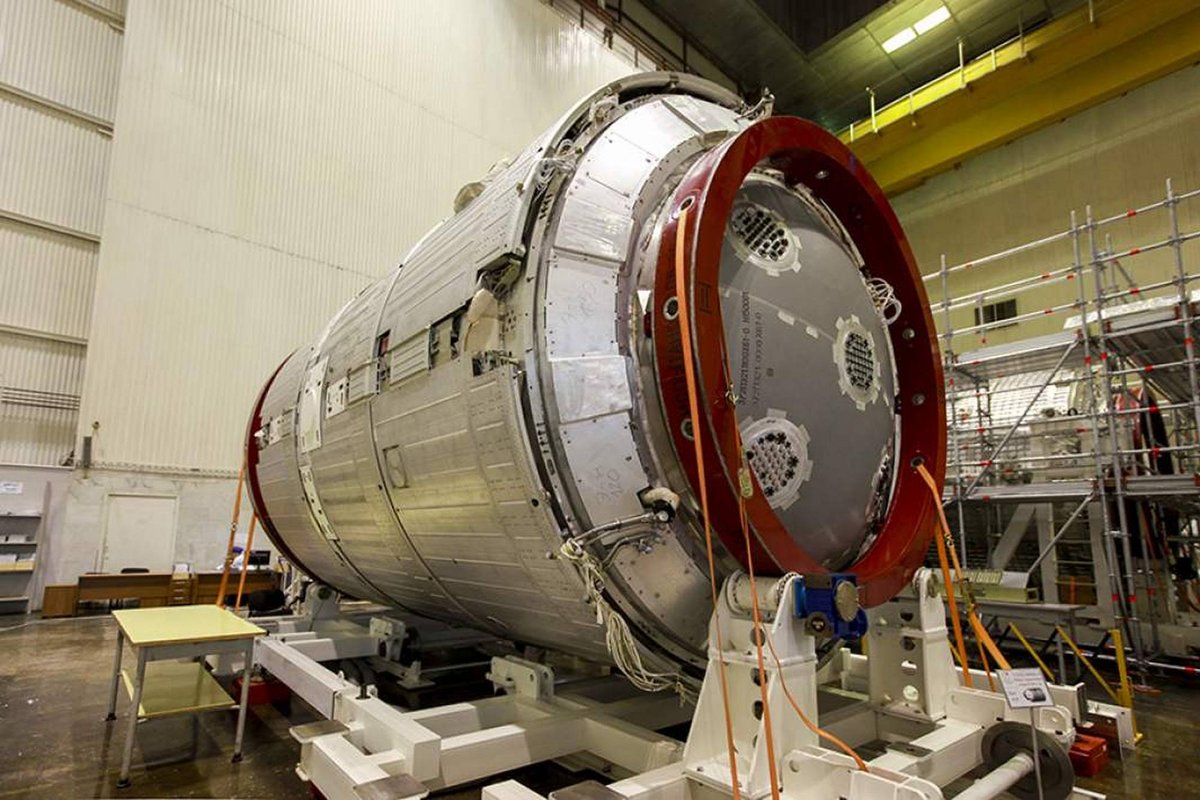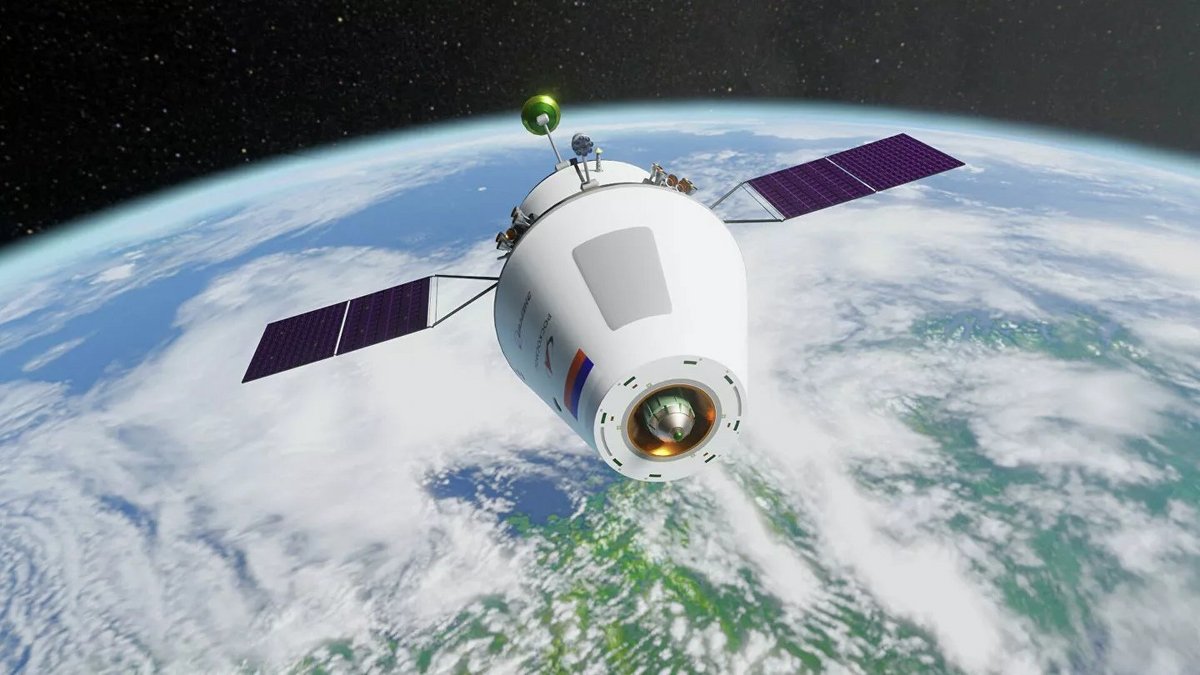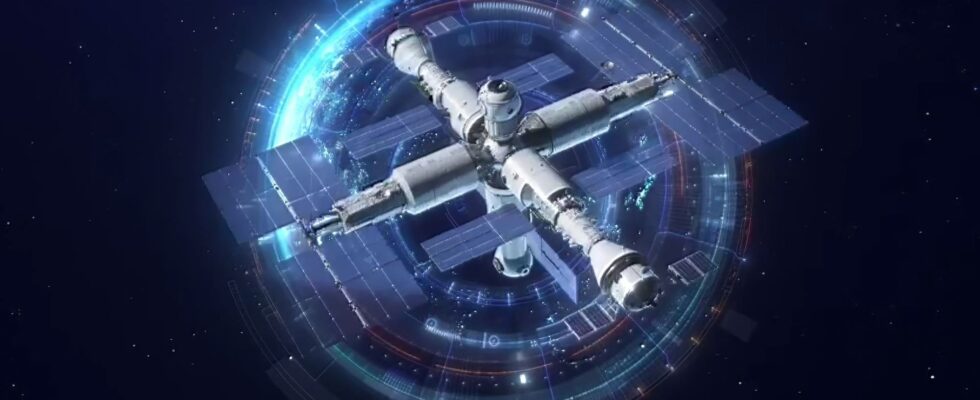- What to do after the ISS?
- Taking the modules from the ISS, impossible?
- An architecture around NEM
- A special orbit for ROSS
- A ROSS station, but no RACHEL
- You will need the appropriate budget
What to do after the ISS ? Russia has been working on the subject for almost two decades, and the answer is not easy to find. Between maintaining ambitions, wanting to be at the forefront of research in orbit and being realistic about its capabilities, we will have to find the right balance. Then ” Russian Orbital Service Station » will it exist?
Times change, and so do plans. That of a future Russian manned orbital station has varied enormously since the beginning of the 2000s. Because it must be remembered, Russia is after all the heir to the nation which has most manufactured and operated space stations, with attempts continuously or almost since the beginning of the 1970s. From then on, even if the 1990s were marked by increased space cooperation with the Americans on Mir, then on the International Space Station project, there was always a question of to prepare for a solo future. To support Russian industry, obviously, but also because it is not possible to do everything on the ISS, in terms of access and research, and the latter is not eternal. But then, what is ROSS?
What to do after the ISS?
What we call today the “Russian Orbital Service Station” or ROSS has taken several names. Between 2010 and 2018, it was called OPSEK, for example. However, it already existed. At the same time as Russia was still assembling modules for the ISS, the observation was there: afterwards, there would be the return of national stations. Obviously, politics and budgets made the project vary. In 2001, for example, Russia did not have enough money to tackle it.
In 2004, the United States announced its Constellation to the Moon plan, so the future station would have to be a preparation outpost for lunar missions. Then Russia was gradually ostracized after its first invasion of Ukraine and the occupation of Crimea in 2014. Tensions grew, and with them a plan took shape: to use modules that had been in development for a long time, which Roscosmos initially intended send to the ISS to increase its capabilities, and make it the basis of ROSS.
Taking the modules from the ISS, impossible?
It must be said that on the international station, Russian capabilities are limited by their modules. The first large module, Zarya, has now been in orbit for 25 years, its design is very old and it now only serves as storage and a corridor. Zvezda, the main module, is used to pilot the ISS, as a living space for Russian cosmonauts, as an observation point and it houses some limited experiments. The small Rassvet module is also a storage location, Poisk serves as an airlock for spacewalks… Until the arrival in 2021 of the Nauka module and its extension the Pritchal “node”, capable of docking in theory up to 4 additional modules or to serve as an airlock. But Nauka is an old module disguised as new, in reality its structure is more than 20 years old, its equipment is old, and in addition there have been some problems, in particular with its cooling system in 2023.
An original plan originally called for building the ROSS from the most recent elements of the ISS, thus undocking Nauka and Pritchal, then changing their orbit, adding new modules and quickly beginning manned operations. As it stands, this plan no longer holds today. ROSS will be built from new elements only.

An architecture around NEM
The first will be the module known today as NEM-1. It is a large assembly of 21 tonnes, with the particularity of having half dedicated to cosmonauts (and therefore pressurized) with modern and powerful laboratory installations, and the other half with large solar panels, enough maneuver and fuel reserves. A radical module in short, compared to those currently in orbit. Better still, the flight item exists on the ground, even if it is not yet suitable today to be the central brick of a station. In any case, it will not be sent into orbit before at least 2027 or 2028 to coincide with the end of Russian operations on the ISS (and to save as much as possible), if the plan is adopted and respected by Russian manufacturers from 2024.
The objective is in any case to add a node module like Pritchal and, intelligent design, to organize the entire station around this “hub”. Thus, no more aging problems: if a laboratory is handicapped, cracked or too old, it can be replaced. Those of the ISS, which control the station, are interconnected by 20 years of cables, antennas, fiber, instruments… and in any case, they were not built to be unmoored.


A special orbit for ROSS
This month, the head of ROSS design for RKK Energia (which is the prime contractor) said in an interview that the file is more than 1,500 pages long, and that it is currently being evaluated by the Russian state. If the latter gives the green light, then the design will be frozen as is. And ROSS has some pretty interesting features. First of all, its orbit is not that of the ISS, nor of the Chinese station: it is much more inclined, it is a so-called “polar” orbit. This allows observations over the entire Russian territory, and if this seems anecdotal to you, it is nevertheless at the heart of its design. In particular, Russia wants to be able to test new Earth observation and soil evaluation sensors there… While the military, with an entirely state station, could also send prototypes adapted to their future satellites.
ROSS is also seen as a “command center” for all or part of future Russian satellite constellations. In the same orbit, it will centralize information, relay, and can deploy or even accommodate units for repair or improvement. An interesting concept, even if we can question the economic relevance of the model. Especially since a polar orbit categorically prevents resuming the modules currently on the ISS.
A ROSS station, but no RACHEL
ROSS, as we have said, will be structured around a central module and the NEM. If RKK Energia obtains all of its funding (this is doubtful), the station will have up to six habitable modules by 2032. Some of these modules will probably be on a model other than NEM, for example that of the concept of OKA-T free flight laboratory. This option is very interesting, because in reality “perfect” weightlessness is not really achieved in a space station. There are a lot of small disturbances.
Dockings and undockings, small changes in orbital trajectory, different equipment and their induced vibrations, and even the astronauts themselves! The idea is therefore to have a module which can dock temporarily, then carry out medium and long term experiments in free flight, not far from the station before attaching to it as soon as the need arises. actually felt.


But besides its orbit, its modularity and its interactions, there is an element of ROSS which seems quite radical, if it is adopted as is. In fact, the new station would do without the venerable Soyuz vehicle! This would indeed be a revolution, especially in the country which has been talking about this replacement for a long time.
The Oriol capsule, more spacious, more complex and capable (a version is planned for lunar missions), would be the transfer vehicle of choice. Note that if Russia is able to fly this new capsule by 2027 or 2028 with cosmonauts, it will already be an achievement. That being said, the polar orbit would also offer special flight conditions for the station’s inhabitants: above the poles, the bombardment of solar particles is greater than in current manned orbits.
You will need the appropriate budget
This is the downside of the ROSS… Is Russia capable of deploying the money and infrastructure necessary for a new orbital station today? China has shown that it knows how to take up the challenge, American industrialists are in the starting blocks, but the government of Vladimir Putin has for the moment a very expensive war to wage with its invasion of Ukraine in 2022, and priority goes instead to new military projects.
Finding funds to develop up to six modules in ten years will be difficult knowing that ground installations are still needed to support the industrial project. Not only with subcontractors, but also with spaceports. With this polar inclination, it will be necessary to count on launches of the Angara rocket at Vostotchny for the modules, but also the cosmonauts with an A5M version which is planned, but does not exist today.


Will ROSS see the light of day? And above all, will it be ready by the end of the ISS adventure? Cosmonautics is an important showcase of Russian know-how…

9